How many people have we trained? How many trees have we planted? How many research reports have we published?
We will only be able to answer these questions if we are able to measure our impact.
How many people have we trained? How many trees have we planted? How many research reports have we published?
We are used to writing reports about results related to our activities and short-term objectives to our donors as a form of accountability. However, these indicators alone aren’t enough to assess whether our work is really contributing to our organisation’s long-term objectives: to what extent are we REALLY changing the lives of people and communities? What part of the increase in their quality of life is due to our projects? And a really daring question: is what we do really useful?
We will only be able to answer these questions if we are able to measure our impact.
The impact is the imprint we leave, what remains after the end of a project or programme, but also what justifies our mere existence as an organisation. Measuring it allows us to redirect our work if needed, leaving behind what isn’t working, and focusing on what is.
To be completely honest, there is also a more pragmatic reason to measure impact. Donors are showing an increasing interest for greater accountability regarding the money they spend on projects: they want evidence that the money they are investing is making a difference. Maintaining clear and systemized information about the results of our work at different levels is a huge competitive asset and greatly improves our organisation’s image and positioning.
Here are some tips to start planning with your mind set on impact.
Clarifying concepts
First, we need to be clear about the following concepts and how they are distinct from one another yet complementary and successive:
- Inputs are resources that we use to implement a project. They are what we invest. For example, money, human resources, infrastructure, vehicles, equipment, know-how, ideas, etc.
- Activities are actions that we implement in order to achieve project objectives. It is the work we do directly to try and bring about change. For example, organising a workshop, running a training session, doing research, etc.
- Outputs are the direct immediate results, the direct consequence of activities; what the project has achieved in the short term. It is what our activities produce. For example, a workshop or training has been done, research is available, etc.
- Outcomes are directly related to the project goals, and refer to the medium-term consequences of our activities. These can be changes in people’s knowledge, awareness, skills or capacity; or changes in people’s behaviour. For example, participants from a workshop may have an improved ability to advocate for policy reform. Or policy proposals may be better formulated and more strategically presented to decision-makers.
- Impact is the long-term consequence of our activities, the changes that can be attributed to an organisation, programme, project or intervention, whether intended or unintended. This is usually at the level of changes in conditions. For example, improved well-being, decrease in poverty, reduced deforestation rates, etc.
A few tips to measure and show impact:
- We have to be clear, before designing a project or programme, about what we want to achieve with our intervention. We should invest some time in clarifying our organisation’s long-term objectives: what life changes will we try to bring to the people or communities we work with? Or what changes do we want to bring to the environment around us?
- Invest some time implementing a baseline survey (basically, measuring the situation at the time we start our projects), involving different stakeholders.
- It would be a good idea to have a control group (people that don’t benefit from our interventions), to prove that changes are really due to our project.
- We need indicators of success to measure each element: outputs, but also outcomes and impact. Otherwise how will we know that we are achieving what we set out to do?
- It is essential to involve our future beneficiaries in our monitoring and evaluation efforts: it isn’t realistic to measure change by ourselves.
If you would like to delve deeper, here are some well-known methodologies for impact measurement. And remember what they say: what isn’t measured can’t be improved!
- The London Benchmarking Group (LBG) promotes an emerging global standard for reporting community investment activities. It has been adapted to measure and manage social activities and NGO activities, as well as the outputs and impacts achieved.
- The Most Significant Change (MSC) approach involves generating and analysing personal accounts of change and deciding which of these accounts is the most significant – and why.
- European Venture Philanthropy Association (EVPA) standard: A practical guide using an impact measurement standard endorsed by the European Commission as the EU-wide best practice standard of impact measurement.
- Impact Reporting and Investment Standard (IRIS) is an initiative of the Global Impact Investing Network (GIIN), a non-profit organisation dedicated to increasing the scale and effectiveness of impact investing. IRIS metrics are designed to measure the social, environmental and financial performance of an investment.
What about you? Which methodology do you use in your organisation?

